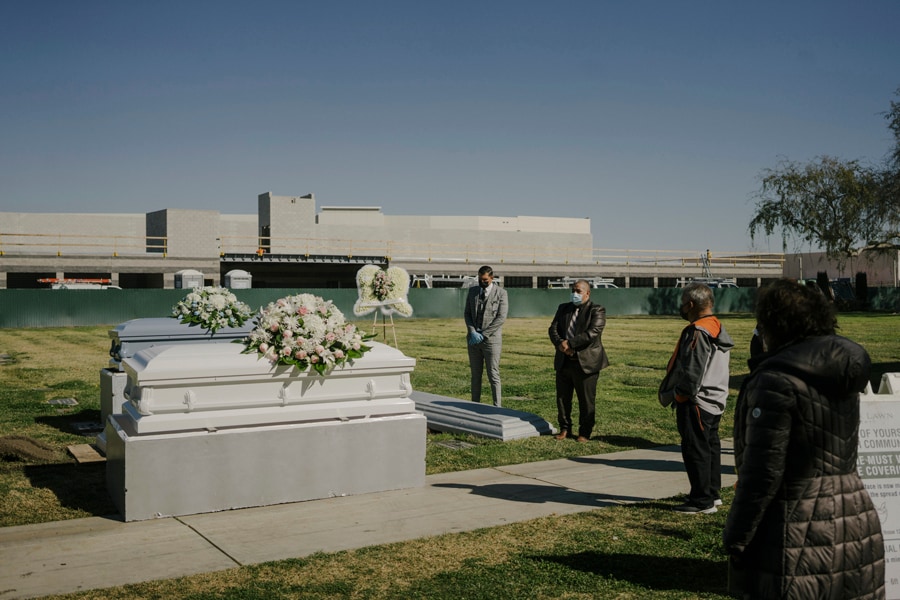
One in 100 older Americans have died in the coronavirus pandemic
Seventy-five percent of people who have died of the virus in the United States — or about 600,000 of the nearly 800,000 who have perished so far — have been 65 or older. For people younger than 65, that ratio is closer to 1 in 1,400
 The coffins holding Maria Serrano, 98, and her son Victor, 67, who both died after complications from COVID-19, at Park Lawn Cemetery in Los Angeles, Feb. 5, 2021. Approximately 75 percent of people who have died of the COVID-19 virus in the U.S. — or about 600,000 of the nearly 800,000 who have perished so far — have been 65 or older. (Isadora Kosofsky/The New York Times)
The coffins holding Maria Serrano, 98, and her son Victor, 67, who both died after complications from COVID-19, at Park Lawn Cemetery in Los Angeles, Feb. 5, 2021. Approximately 75 percent of people who have died of the COVID-19 virus in the U.S. — or about 600,000 of the nearly 800,000 who have perished so far — have been 65 or older. (Isadora Kosofsky/The New York Times)
As the coronavirus pandemic approaches the end of a second year, the United States stands on the cusp of surpassing 800,000 deaths from the virus, and no group has suffered more than older Americans. All along, older people have been known to be more vulnerable, but the scale of loss is only now coming into full view.
Seventy-five percent of people who have died of the virus in the United States — or about 600,000 of the nearly 800,000 who have perished so far — have been 65 or older. One in 100 older Americans has died from the virus. For people younger than 65, that ratio is closer to 1 in 1,400.
The heightened risk for older people has dominated life for many, partly as friends and family try to protect them. “You get kind of forgotten,’’ said Pat Hayashi, 65, of San Francisco. “In the pandemic, the isolation and the loneliness got worse. We lost our freedom and we lost our services.”
Since vaccines first became available a year ago, older Americans have been vaccinated at a much higher rate than younger age groups and yet the brutal toll on them has persisted. The share of younger people among all virus deaths in the United States increased this year, but, in the past two months, the portion of older people has risen once again, according to data from the Centers for Disease Control and Prevention. More than 1,200 people in the United States are dying from COVID-19 each day, most of them 65 or older.
In both sharp and subtle ways, the pandemic has amplified an existing divide between older and younger Americans.
©2019 New York Times News Service







